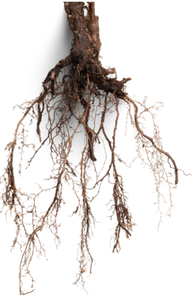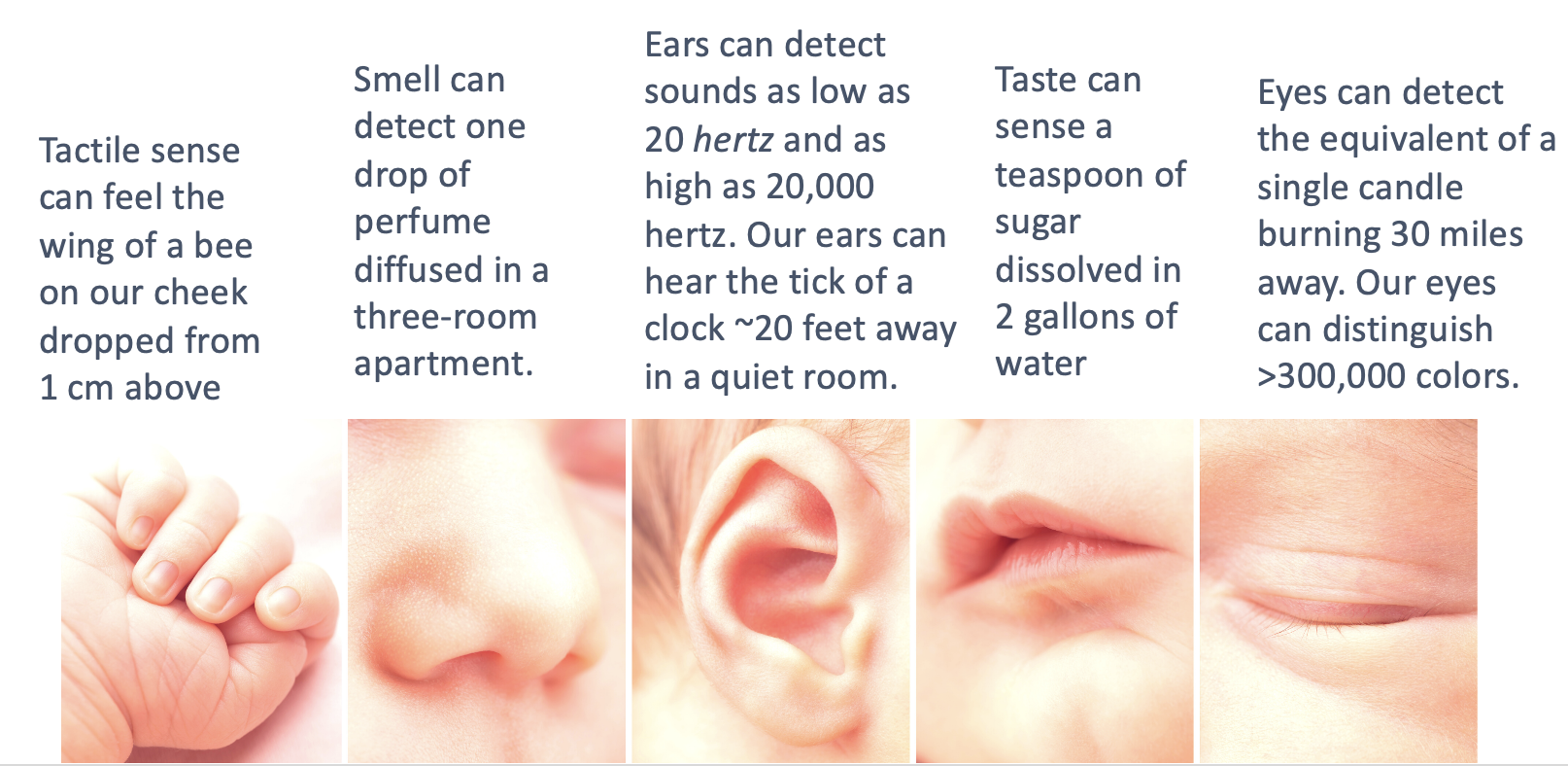|
To give a sense of our complexity, scientists estimate that there are >7 trillion nerves in the entire body. A 1 inch by 1 inch square box on your arm is estimated to contain 3 yards of blood vessels, 4 yards of nerve fibers, 100 sweat glands, 3 million cells, and 32 million bacteria. Numbers this large are almost unfathomable. While the exact number is not important, it speaks to the sophistication and complexity of the human nervous system. The nervous system is responsible for two very important functions. First, it provides all of the sensory input to the brain- “that’s too hot,” “my arm itches,” and “my shoulder feels tight,” as examples. This raw data about the state of the body is translated into usable information in the brain. Second, the nervous system coordinates the movement of the body. These movements are both voluntary and involuntary, meaning we can choose to perform a movement or we reflexively move out of habit or for safety. Bending forward to pick up your groceries is a voluntary movement, and crossing your legs when you sit on the couch is an involuntary movement. Becoming familiar with these two nervous system functions is important for understanding how it directs our feelings, actions, and emotions.  From End to End When thinking about the nervous system, I like to imagine the nerves as small roots of a tree that each connect back to a larger central root system. The nerves on the bottom of your toes run through the arch of the foot to the inner ankle, up the back of the calf and thigh, into the spinal column, and finally into the brain. In other words, almost all nerves travel from the body, into a specific region of the spine, and eventually arrive at the brain. As the nerves travel throughout the body, each one winds through the skin and muscles, around bones, and across joints. Just like the roots of a tree, our entire nervous system is connected; and therefore, responds as a single unit. Each of these nerves communicate via special receptors that interpret temperature, vibration, pressure, body position, pain, and more. While there is plenty of variation in each individual’s anatomy, the general pathways are consistent for almost all people. For this reason, if you have tingling in your little finger, we know that somewhere along the nerve pathway is involved. Each part of this pathway- body, spinal cord, and brain- needs to be in balance to efficiently and appropriately pass information back and forth. Tension & Compression While the nervous system is highly resilient and adaptable, it is also very protective against injury. As a result, the nerves are highly sensitive to local changes in blood flow and oxygen. Normal, healthy movement is important for a well-tuned nervous system. Contrarily, nerves become less resilient with poor postural and training habits. Limited movement and imbalanced training only stimulates the nerve receptors in a small range of totally capacity. If something occurs outside of that range, the nervous system does not know how to respond, and the chance of injury increases. Specific to movement and training, nerves are sensitive to tensile and compression forces. Tensile forces on a nerve can be compared to stretching a rubber band from both ends. A common posture that tensions the nervous system is prolonged slouching through the lower back while sitting. The slouched posture stretches the lower back nerves as it runs from the spine into the glute muscles. Compression forces- on the other hand- are any pinching (or narrowing) forces on the nerve. Similar to how a blood pressure cuff shunts blood, certain postures or movements compress our nerves. For example, compression from a blood pressure cuff is a relatable example. You can tolerate a blood pressure cuff at a low intensity for a very long time. As the cuff gets tighter, the duration of time decreases. The nerves register the increased compression and send signals to the brain about potential threat. The result is often tingling, temperature changes, and a feeling of muscular agitation. The key is remain strong and mobile through a wide range of tensile and compression forces.  Homeostasis All systems in the body strive for an internal state of equilibrium, which is known as homeostasis. Since the nervous system is the command center of the other systems, maintaining equilibrium is especially important. Both physical and mental stressors significantly impacts the ability to regulate the nervous system. When a nerve reaches its capacity for tolerating stress, nerve related symptoms will present. Symptoms can range from numbness and tingling to itchiness, and even to muscle atrophy in more pronounced cases. Having had intermittent nerve pain in my right arm, this concept is intimate to me. My nerve pain presented as itchiness in my elbow during the middle of the night. The itchiness was so intense that I would wake up scratching my skin raw. After becoming familiar with the pattern, it became apparent that my nerve symptoms were largely related to prolonged sitting at the computer, a lack of physical exercise during these time periods, and poor sleep habits. No single factor induced the nerve pain, but rather the cumulative stressors eventually led to nerve irritation. While I primarily experienced itchiness, each person’s nerve symptoms will depend on the specific pathways that are perceiving stress. Low Quality Input= Low Quality OutputIn this post, we have discussed how the body sends input to the brain, how the brain translates this data into usable information, and how mental and physical stress impacts the nervous system. This information provides the necessary framework for understanding how to maintain a healthy and responsive nervous system. Additionally, it highlights the importance of both the input from the body & the output from the brain. In other words, the quality of input influences the quality of output. Our nervous system is strong, complex, reslient, and adaptable. The more we use and test our bodies, the better understanding we will have of our nervous system!
10 Comments
|
Heafner HealthPhysical Therapy Archives
April 2024
Categories |



 RSS Feed
RSS Feed
